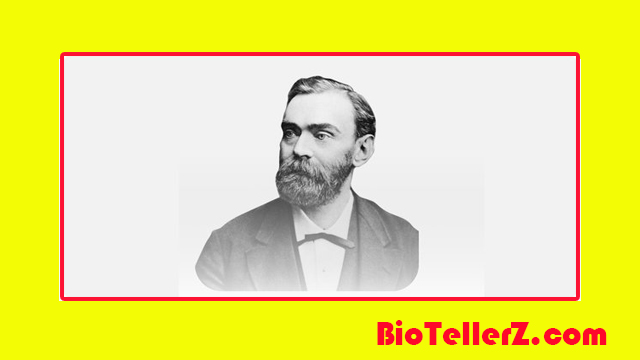Alfred Nobel, also known as Alfred Bernhard Nobel, was a Swedish industrialist, engineer, and chemist who is credited with creating dynamite and other potent explosives. Additionally, he created the Nobel Prizes. Nobel was born in Stockholm, Sweden, on October 21, 1833, and died in San Remo, Italy, on December 10, 1896.

Alfred Nobel
The fourth child of Immanuel and Caroline Nobel was named Alfred. Immanuel Ahlsell, a scientist and engineer, wed Caroline Andrietta Ahlsell in 1827. Only Alfred and three brothers survived to adulthood out of the eight children the couple had. Alfred had a close relationship with his mother and was prone to illness when he was younger, but he also displayed a lively intellectual curiosity from an early age. His father had a fascination with explosives and had taught him the fundamentals of engineering. Preceding their move to St. Immanuel had tried and failed at a number of business ventures before he met Louis in 1837. to follow the father to St. The Nobel family departed Stockholm in 1842, Louis. Petersburg. In addition to being fluent in Swedish, English, French, German, and Russian by the age of 16, he had mastered the science of chemistry.
Alfred Nobel spent some time working in the United States for John Ericsson, who was in charge of creating the ironclad warship Monitor, after spending a year studying chemistry in Paris. In 1850, Alfred Nobel departed from Russia. He returned to St. During the Crimean War in 1852, Nobel labored in his father’s factory in Petersburg. After the war ended in 1856, the company found it difficult to switch from manufacturing steamboat machinery during wartime to doing so during peacetime, and it eventually went out of business in 1859.
Alfred and his parents departed for Sweden, while Robert and Ludvig remained in Russia to try to save what was still left of the family business. Soon after, Alfred began conducting research on explosives in a tiny lab on his father’s property. Despite this, in 1862 Nobel built a small factory to make nitroglycerin. During that same year, he also conducted research to try and figure out a safe way to control the explosive’s explosion. He developed a practical detonator in 1863 by inserting a wooden plug into a larger charge of liquid nitroglycerin kept in a metal container. The small amount of liquid nitroglycerin in the plug is ignited by the small amount of black powder that explodes in the plug. A better detonator known as a blasting cap was created by Nobel in 1865. It was a tiny metal cap with a mercury fulminate charge that, in the presence of mild heat or shock, could explode. The invention of the blasting cap led to the widespread use of high explosives in modern times.
However, handling and moving nitroglycerin itself continued to be dangerous. As a matter of fact, it was so dangerous that Emil Nobel, Nobel’s younger brother, and a number of other people died in a fire at his nitroglycerin factory in 1864. Despite the tragic accident, Nobel built a number of factories to make nitroglycerin for use with his blasting caps. Although these factories were as safe as knowledge at the time allowed, accidental explosions still happened from time to time. His second important discovery, dynamite, was made in 1867. than just nitroglycerin. Nobel’s invention of dynamite, which was soon used to blast tunnels, chisel canals, build roads and railroads, and establish Nobel’s international fame.
In the 1870s and 1880s, Nobel established a network of factories all over Europe to produce dynamite. He also established a network of businesses to produce and market his explosives. He continued to search for better ones, and in 1875 he developed blasting gelatin, a more potent variety of dynamite. Next year, he filed for a patent on it. Again by chance, he had discovered that nitrocellulose, a fluffy substance, and nitroglycerin solution could be combined to produce a tough plastic material that is more powerful than. Typical dynamite and has a high water resistance. Ballistite was first made available by Nobel in 1887 and was one of the first nitroglycerin smokeless powders and a precursor to cordite. This forced him to participate in protracted patent disputes on several occasions.
The Nobel brothers, Ludvig and Robert, became extremely wealthy as a result of developing recently discovered oilfields close to Baku (now in Azerbaijan). Thanks to his international investments in explosives and his personal stake in his brothers’ Russian business endeavors, Alfred amassed a sizeable fortune. He developed an interest in Sweden’s defense of the prestigious Bofors arms factory in 1893. Nobel also invented synthetic silk and leather in addition to explosives, among many other things. He submitted more than 350 patent applications worldwide.
Related Posts
Donald Trump – Best Guide in 2023
